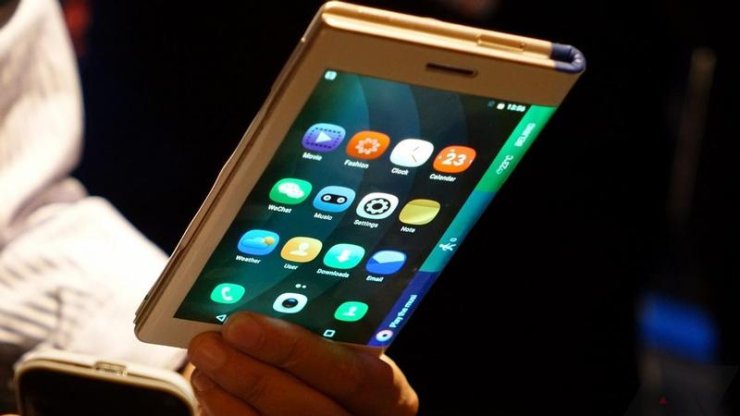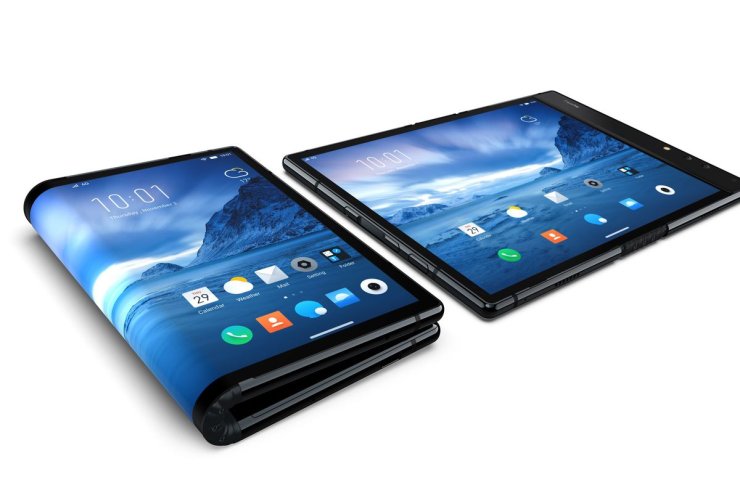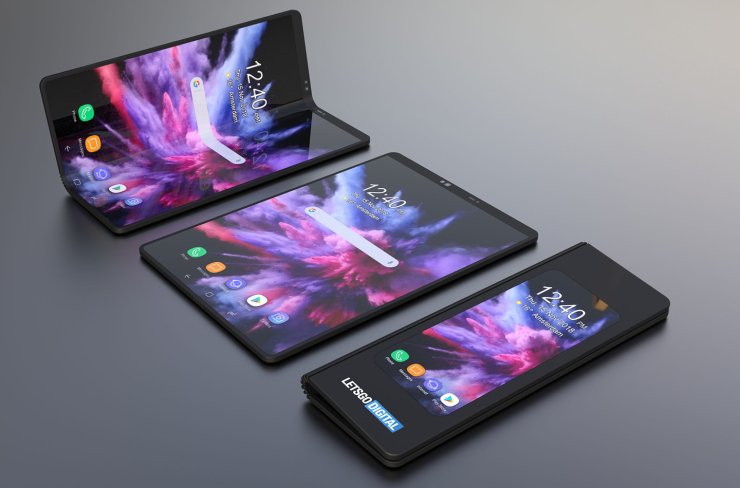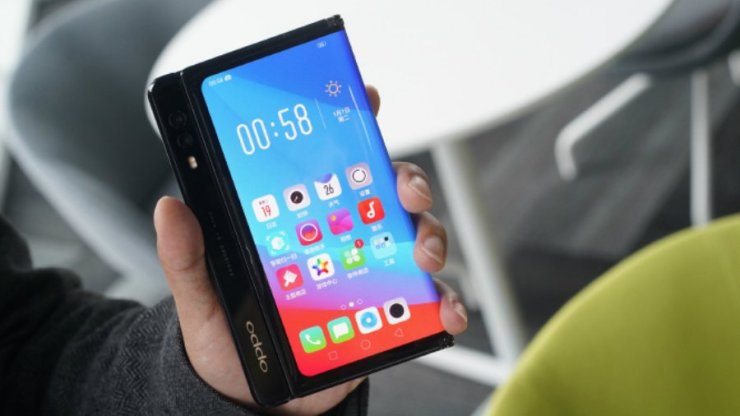Nearly all famous smartphone manufacturers are racing to bring smartphone products with folded screens. A lot of people have talked about The appearance of the smart screen with a folded screen at Mobile World Congress and many different opinions have been raised. This will be a revolution for mobile screens and of course, they will be very expensive. They may not work perfectly because they are the first generation but their prices are likely to decrease significantly in the future and in the next generation.
However, this is not really the first generation of foldable smartphone. If you do not remember, the Lenovo phone launched 3 years ago also designed a screen capable of flexibility.

The phone is quite well done and is not much different from the modern designs launched in the last few weeks from the famous phone manufacturers such as Oppo, Huawei, and Royole. Lenovo developed this design three years ago with the inspiration to create a combination of tablets and mobile phones. It allows users to complete the necessary tasks on the tablet and still be handy for moving and listening. This device has no screen-splitting apps and does things that Samsung and Huawei are currently making us believe they are at the forefront of this idea. Lenovo's concepts were never developed into a complete product and marketed, including the idea of a handy hand-worn phone like a watch. While now, the idea of flexible screens is widely developed by many other manufacturers, Lenovo was stuck in its own idea at that time.
Lenovo's smartphone couldn't be put into production in 2016 because there's a clear hinge between the two screens and the fold is easy to see so they don't look good. It seems like the producers who are currently developing this idea have already figured out this, but the solution of both Huawei, Oppo, and Samsung is to use plastic to cover it. Many people believe that this is a bad choice because plastic will scratch and form dents and folds after a period of use. The designs of Samsung and Huawei both contain this material and many say it doesn't look good either. However, this is only the first generation of smartphones with foldable screens launched on the market, and we have many questions that need to be answered around this design.

Where does the curved glass come from?
Not only the giant technology company from Korea - Samsung but other phone manufacturers are also focusing on developing flexible glass. Corning, a company that manufactures and develops glasses, released a flexible glass version last month and was announced by CNET. The company has yet to release any information about the product lifetime, but they say it can bend up to 5mm in many times. It seems that it bends enough to be the screen of a foldable smartphone, but we have not yet determined its durability and suitability to fit into the device. By to become the screen of a phone they must be able to withstand the continuous use of humans for smartphones. Perhaps this problem will be told by Corning at MWC this year.
For security and monopoly reasons, we still don't know any further information about Corning's bent glass. But perhaps the feasibility of these bent glass has yet to motivate smartphone glass manufacturers to put their energy into this idea.

Investment and production costs
One problem that many manufacturers still worry about to participate in this production trend is the cost of investing in them. Perhaps most of us know that these phones with foldable screens will not be affordable. They are able to replace the position of high-end phones on the market and their prices can be much more expensive.
Manufacturers also do not want to reduce their costs unless there is an impact of competition in business. However, this will be the first generation of this product line so we can't expect that they are cheap.
We can see many factors that lead to increased production costs of smartphones with folded screens and a number of factors in which prices have not dropped significantly over the years. For example, the screen of the touch-sensitive phone will be larger, requiring more battery supply. Their assembly work also becomes more difficult and complicated.
Consumers have made a lot of different opinions about whether a $1000 smartphone is really worth it or not, if the phone folds for $1500, their market will be as big as How to consider only in terms of price?

The fate of software on foldable smartphones
Although many people will benefit from the development of curved screens, they will probably receive a lot of criticism from online critics. There are quite a lot of people who don't expect phones that are too big because they will become hard to carry.
However, phone designers are increasingly obsessed with expanding the screen size to the extent that they think of the curve to bend them so they can both be handy in moving and using different applications.
We all enjoy reading, playing games, watching movies and surfing the web on the tablet's screen more comfortable than on smartphones. However, so far, some drivers of screen sizes on smartphones really have no advantage of this development. Unless the movies and TV shows are filmed in a square ratio, the black bars above and below the video will be big and become quite useless.
Many people believe that many software will not be optimized on folding screen phones. However, Android applications are enough to trust that it can work well on a folded phone operating system. It will almost have no problem switching from small screens to larger screens, the existence of Chromebooks as a good example.
For operating system applications, this is not a concern because phone manufacturers will write their own boot launchers without Google participation. The conversion of the application to the folding screen has been completed by some application developers but no one can do it. Google will provide a general release for Android Strudel or Rhubarb or anything else and everything will be fine. After that, we will find what Android developers should do, but they won’t do and so more.
The worry about software bugs on folding screen phones is not really serious. Although there are applications that will look very odd when displayed on a 7-inch square screen, applications such as browsing, maps, reading e-books are a suitable screen size. physical. Especially for mobile game players, these are people who expect phones with wide screens to optimize their gaming experience.
A lot of reasons for other smartphone manufacturing companies are not involved in producing smartphones with folding screens. For example, the flexible glass doesn't really work, the phone is really improved and continues to produce new generations. Samsung has invested a lot in this project, maybe they are really able to develop. But if it cannot overcome the shortcomings of the first generation, they may lose the attraction for consumers in the future.










Comments